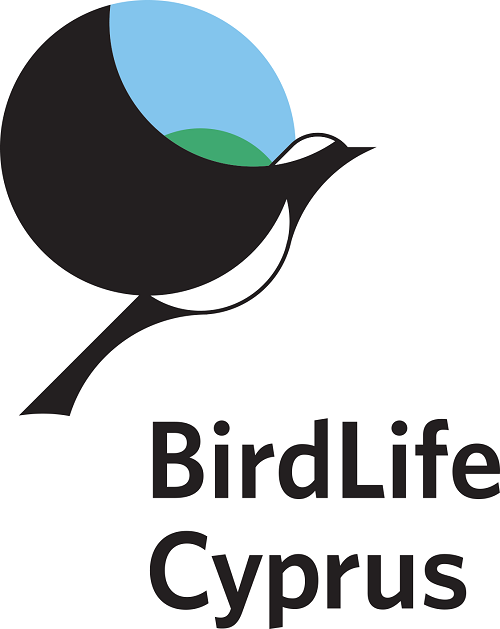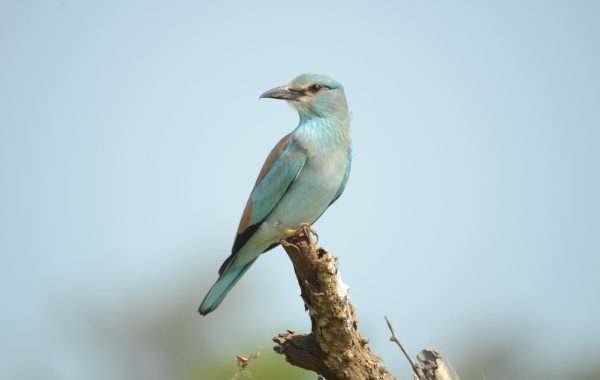Terra Cypria – The Cyprus Conservation Foundation and BirdLife Cyprus are raising serious concerns about the multiple pressures and threats that the Lady’s Mile Beach in Akrotiri Peninsula is facing, putting in danger this area of significant ecological value. The two environmental organisations emphasize that the correct, timely and strict enforcement of the existing legislation is needed by the Administration of the British Sovereign Base Areas (SBAs).
Lady’s Mile Beach has great environmental importance, as it is designated under the Ordinance for Nature and Wildlife of 2007, as well as the Ordinance for Wild Birds and Game Species of 2008, as a Special Area of Conservation (SAC) and a Special Protection Area (SPA), respectively. Along the coastline of Lady’s Mile important and protected natural habitat types of community interest are found, as well as important populations of rare and threatened plant species, listed in The Red Data Book of the Flora of Cyprus. The sandy beach of Lady’s Mile is also crucial for sea turtle nesting, with nests of priority species listed in The International Union for the Conservation of Nature (IUCN) Red List of Threatened Species, namely the globally vulnerable Loggerhead Turtle (*Caretta caretta) and the globally endangered Green Turtle (*Chelonia mydas). Furthermore, the coastal strip of Lady’s Mile plays a vital role in supporting many species of wild fauna, such as the globally endangered Schreiber’s Fringe-fingered Lizard (Acanthodactylus schreiberi), as well as waterbirds, such as the Kentish plover (Charadrius alexandrinus) that nests on the sand. Lady’s Mile Beach is located adjacent to the Wetland of International Importance/Ramsar Site Akrotiri and within the Important Bird Area Akrotiri Peninsula – Episkopi Cliffs.
According to the Akrotiri Peninsula Environmental Management Plan, which has been approved and published in September 2012, the natural habitat types, as well as species of wild flora, fauna, and avifauna found at the Lady’s Mile Beach, are facing multiple pressures, severe threats, and significant impacts, due to rampant developments and recreational activities. Some of these threats include direct loss, degradation, and fragmentation of natural habitats, caused mostly by existing infrastructure (road and parking places), developments (restaurants) and amenities (sun beds and beach umbrellas) related to beach recreation, as well as the human disturbance in periods of high visitor activity during the summer.
Restaurants managing sun beds and beach umbrellas do not follow the existing regulations and their licensing conditions. As a result, recreational activities are taking over a big part of the beach, are located few meters from the sea and many are not being removed during nighttime, as they should.
Specifically, the Local Seashore Plans must comply with the provisions of Article 14 (Provision of amenities) of the Seashore Protection Ordinance of 2013, which clearly states that there should be no sun beds and beach umbrellas between 7 pm and 7 am. However, there are recorded incidents where sea turtles had been prevented from nesting, when sun beds that were not removed after 7pm had presented an obstacle to sea turtles that had got out of the sea to lay their eggs. As a result, the turtles returned to the water without laying their eggs. Whilst the removal of amenities does not take place, the authorization of more sun beds and beach umbrellas, like recently in the case of Asomatos Foreshore Plan, means more habitat loss and/or nest damage for sea turtles.
Furthermore, the Local Seashore Plan must comply with the provisions of Article 10 (Events) of the Seashore Protection Ordinance of 2013, which clearly states that for any event a permit should be granted by the SBAs Administration. This includes any social or sports event but does not include any entertainment taking place inside a building where the business is a restaurant, and the event is being undertaken in compliance with all legislative requirements. Moreover, the entertainment should merely be ancillary to the business of operating a restaurant. However, restaurants are repeatedly organising events, without a permit, outside the building and on the beach, during nighttime, with light and sound, just beside sea turtle and waterbird nests.
We regret to observe that the situation in the past few years has worsened, as it seems that no effective measures are being taken, no deterrent penalties are being imposed and the existing legislation is essentially not adequately implemented by the SBAs Administration. Although efforts are being made in the wider area for better protection, the non-compliance of the restaurants at Lady’s Mile Beach raises great concerns, as the situation leaves minimum space for the coastal ecosystem to support the species it hosts and mainly sea turtle and waterbird nesting activity. The SBAs Administration should set up an effective mechanism to ensure that all amenities, including sun beds and beach umbrellas, are removed during nighttime, and all the events are licenced before they take place and comply with the regulations.
We would like to emphasize that a nesting site, as in the case of Lady’s Mile beach, should be considered as a single unit and managed in an integrated way. Since anthropogenic impacts are synergistic and cumulative, any impact assessment should be done at the nesting beach level (i.e. a Seashore Plan of the entire area with an overall estimation of sun beds and beach umbrellas, as well as visitors and users of the beach) and not for individual sub-units (i.e. single Seashore Plans of each Local Seashore Committee). Each individual development project and/or Local Seashore Plan might be independently considered as sustainable and therefore approved, but this would result in a non-sustainable overall effect by multiple development projects and/or local seashore plans.
The continuous increase in number and expansion of sun beds and beach umbrellas area, as well as the unregulated operation of restaurants and the unlicensed organisation of events during nighttime, including music, lights, fire lighting and torches, raise concerns as it could potentially encroach upon sea turtles nesting beaches and result in increased human activity and disturbance for other key species of wild fauna and avifauna as well. Such beach recreational activities and facilities can lead to disturbance, habitat loss, degradation, and fragmentation, as well as significant indirect impacts, such as increased compaction of sandy beach habitat and reduced or failed reproductive activity of sea turtles, among other threats. Considering the current conservation status of habitats and species in the area, any further increase of the level of habitat degradation and species disturbance in the area should be considered as having a significant impact, and consequently unacceptable.
According to the Appropriate Assessment Report of the Environment Department of the SBAs Administration and the Strategic Environmental Assessment Opinion of the Environment Department of the Republic of Cyprus, on the SBAs Areas Non-Military Development Plan for the Planning Zone of Lady’s Mile Beach, existing mild and conventional types of recreation may be permitted, only if the December 2011 “footprint”, defined by the SBAs Administration, is not exceeded. Considering the significant negative impacts of the existing beach recreational activities and facilities, as well as the lack of direct relation to site management plan and conservation targets, the SBAs Administration should adopt and implement a “zero tolerance” policy against any further breach of the provisions of the Ordinance for Nature and Wildlife of 2007, the Ordinance for Wild Birds and Game Species of 2008, as well as the Seashore Protection Ordinance of 2013, at Lady’s Mile Beach.
While we acknowledge the significance and the challenge of maintaining a balance between beach recreation activities and the obligation of nature protection at Lady’s Mile, we believe that prioritizing the preservation of the area’s ecological integrity is of utmost importance, as this is foreseen by the existing legislation and the area’s protection status.
Based on the above, Terra Cypria – The Cyprus Conservation Foundation and BirdLife Cyprus urge the SBAs Administration to undertake the following measures:
- Correct, timely and strict enforcement of the existing legislation, by ensuring that all amenities (including sun beds and beach umbrellas) are removed during nighttime (between 19:00 and 07:00), while all events are assessed and licensed before they take place. Any event should take place inside a building where the business is a restaurant, the business is being undertaken in compliance with all legislative requirements and the entertainment is merely ancillary to the business of operating a restaurant.
- Enact and implement the necessary Ordinance for the Protection and Management of Nature and Wildlife for the SAC Akrotiri, as well as the Ordinance for the Protection and Management of Wild Birds and Game Species for the SPA Akrotiri Wetlands.




